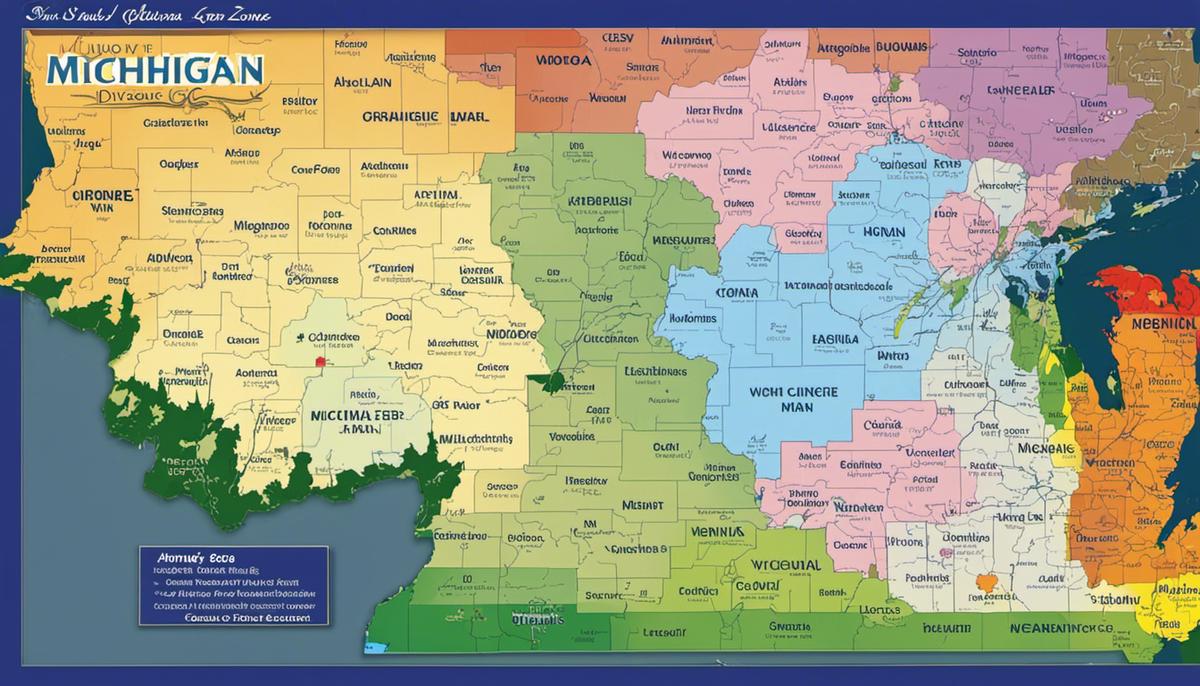Discover Michigan’s Prime Planting Zones

Michigan, renowned for its diverse landscapes and varied climates, offers a wide array of planting opportunities for both amateur and seasoned gardeners alike. To make the most of what this beautiful state has to offer, understanding the concept of United States Department of Agriculture (USDA) Hardiness Zones is crucial. This understanding provides valuable insights into which types of plants can flourish within particular regions, ensuring successful and vibrant horticultural endeavors. In this exploration, we delve into the intricate aspects of USDA Hardiness Zones specific to Michigan, identifying what zones are present and discussing what each of these zones entails.
Understanding USDA Hardiness Zones in Michigan
For gardening enthusiasts in the Great Lake State, understanding the USDA Hardiness Zones is a must. The USDA Agriculture Research Service has divided the state of Michigan into four unique zones based on the average minimum winter temperature. These zones—4, 5, 6, and 7—guide enthusiasts on when and what to plant for optimal growth. The higher the number, the milder the winter for that area, and vice versa. This demarcation greatly impacts the types of plants that can withstand the regional temperatures.
Zone 4, the coldest, is located in the Upper Peninsula and the northernmost parts of the Lower Peninsula. Here, gardeners can benefit from plants and shrubs that are resistant to freezing temperatures, like chokeberry and blue spruce. Zone 5 spans from the middle to the northern parts of the Lower Peninsula where plants like the blazing star and Swiss chard thrive well. Zone 6 encompasses the southern and central portions of the Lower Peninsula, enabling a wider variety of plants such as lavender and sweet potato vine. The mildest climate is found in Zone 7, restricted to the southernmost parts like the lakeshore of Lake Michigan. Here, you’ll see plants like the Japanese maple and butterfly bush flourish. These hardiness zones equip gardeners with crucial insights to ensure the health and vigor of their gardens all year round.
Remember, the USDA Hardiness Zones are just a guide. Local weather conditions can fluctuate, and other factors like soil type and moisture level can also impact a plant’s resilience. It’s a fascinating layer in the already rich tapestry of gardening. Whether a novice or a seasoned green thumb, knowing your zone is essential for a successful garden.

Planting Guide for Different Zones in Michigan
Further enhancing your green thumb endeavors in Michigan with the right understanding of typical plants suited for the stated zones is instrumental to your gardening success. For instance, in Zone 4, the coldest region with winter lows down to -30F, plant Hardy Perennials such as Sedum ‘Autumn Joy’ and Echinacea purpurea (‘Purple Coneflower’) to ensure survival in challenging temperatures. Zone 5, with usual winter lows of -20F to -10F, holds cherries, chestnut trees, and crabapples as resilient choices.
For gardeners in the slightly temperate Zone 6, with winter lows in the range of 0F to -10F, Dogwood trees and Black-Eyed Susans thrive especially well. Zone 7, the warmest area in Michigan, has winter lows from 10F to 0F and supplies an environment conducive to growing English Lavender, Rosemary and even Peach and Pear trees.
Timing is equally imperative. For most, early spring proves an excellent period for planting, following the last frost date. This window varies across Michigan, but typically falls between late April to early May. However, perennial plants such as Tulips and Daffodils perform best when planted in Fall. By adhering to these guidelines, any passionate gardener in Michigan can enjoy the fruits of their labor throughout the bloom periods and beyond. Root in and watch it flourish!

Armed with an understanding of the various USDA Hardiness Zones within the state of Michigan, gardeners can equip themselves with the knowledge needed for the successful establishment of plants suitable for each zone. Providing readers a handy and insightful guide, the information heralds a roadmap for optimising planting schedules, aligning with the specific conditions and requirements of each region. The splendour of Michigan’s diverse landscapes can be further enriched by making informed choices, cultivating a canvas of thriving vegetation that contributes to the state’s captivating natural aesthetics.



